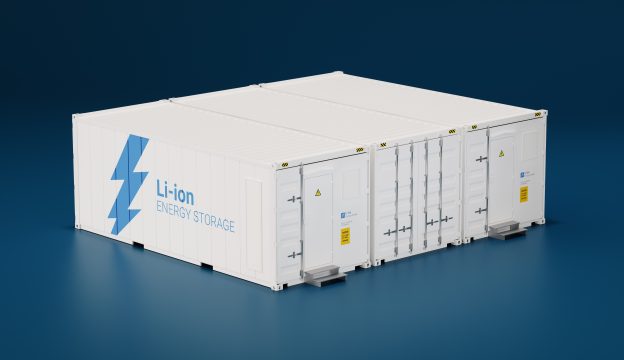
There might just be additional purposes for abandoned drilling platforms and pits. Scottish startup Gravitricity is planning to construct a 250KW gravity energy storage pilot plant in Leith of Edinburgh, which utilizes weight potential energy to invigorate generators to generate power and store further excessive local renewable energy.
This energy storage technology is somewhat similar to pumped-storage hydroelectricity, where the gravity media for water storage power stations is “water”, and electricity storage is implemented through adjustments in water level. The electric pump is initiated during overproduction of electricity to transport the water to the reservoir on a higher ground; the water gate is then released when the demand for electricity increases, where the water of the reservoir is then flown back to the original location in accordance with the terrain, and the water potential energy will be able to propel the turbines in the waterway to regenerate power.
Using “weights” between 500 and 5,000 tons as the gravity media, Gravitricity puts abandoned drilling platforms and pits to good use by repeatedly hoisting and releasing a 16m long rig within a 150-1,500m drilling well, where the rig is first pulled to the top of the abandoned drilling well using the electric winch, and is released straight down when power is needed, which “releases” the stored electricity. The concept is identical to that of pumped-storage hydroelectricity plants, as both methods are able to stabilize and adjust power grids, and the former can even control the descension speed to extend the release time of power.
Gravitricity claims that the system can provide power within a second of rapid response, similar to the speed of general lithium ion batteries, and is able to stabilize the frequency of the power grid at 50Hz. The frequency of a power grid is an indicator in the balance of supply and demand, and represents the frequency of alternating current in the power grid. Power grids usually adopt 60 Hz in a country like Taiwan where shock occurs 60 times every second, and the lower the frequency is, the harder it becomes for traditional power plants to transmit power into the power grids, and that is a problem never faced by lithium batteries.
According to the company’s official website, the technology has roughly 50 years of lifespan, and will not exhibit performance depletion from years of operation. At a maximum efficiency of 90%, each site can be configured from 1 to 20MW of capacity, with a continuous output time of 15 minutes to 8 hours. Researchers pointed out that the optimal location for establishment is an abandoned pit.
Gravitricity is expected to establish a pilot power plant at the closed deep water port of Leith in October from a budget of approximately GBP$1 million, of which GBP$640K was invested by Innovate UK, and subsequent evaluation on the power plant will be implemented after its completion and connection with the power grid in December.
According to the project, the pilot site will be equipped with two 25 tons rigs. Miles Franklin, engineer of Gravitricity, expressed that this project will provide a clearer model and concept direction for the team, and lay down the path for the full sized 4MW gravity energy storage system in 2021.
Speaking of gravity energy storage system, one has to mention Energy Vault that has set up headquarters in the US and Switzerland. The company compiles concrete blocks weighing 35 tons into a high tower, and relocates the cement blocks to the ground using the crane on the top of the tower whenever power is required. Energy Vault has received a subsidy of US$110 million from Softbank in August 2019.
International Institute for Applied System Analysis (IIASA) has implemented similar researches before, though the gravity media was gravel instead of rig and cement. IIASA utilized the terrain of a steep hillside, and transported gravel to the top of the mountain using a generator when the power usage was low, then transported the gravel back to the surface during high usage of power. This gravel gravity system can also be integrated with general hydroelectricity plants to simultaneously or complementarily allow water and gravel to store power.
(Cover photo source: Gravitricity)







